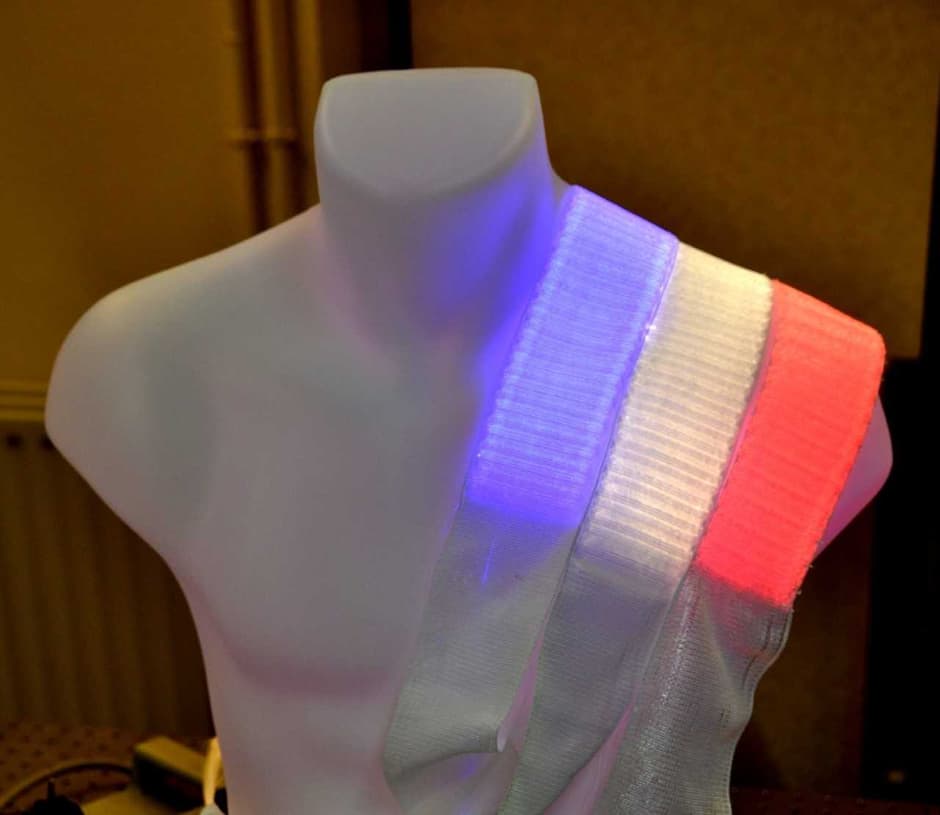
Scientists at Texinov Medical Textiles in France have developed the wearable laser that strikes the skin with light, giving treatment to enflamed skin or lesions over a two-and-a-half-hour appointment.
The laser fabric is claimed to be the quickest device available for eradicating skin conditions with no side effects.
The new Fluxmedicare laser fabric has been developed in collaboration with PHOS-ISTOS, a pan-European health consortium.
It works by covering the affected area with a photosensitizer cream, then wrapping the skin with the light-emitting textile. Optical fibres knitted into the fabric then speed up the reaction between oxygen and photosensitizer cream beneath the skin.
Dr Nadege Boucard, R&D general manager at Texinov said: “Fluxmedicare is unprecedented in the field of treating skin conditions. Since the lighting textile wraps around the unique, individual contours of a patient, the emitted light in our device is the same at every part of the body under treatment, meaning the beams are homogenous.”
Prior to Fluxmedicare, Photo Dynamic Therapy (PDT) was used to treat skin conditions such as Actinic Keratosis. PDT requires a patient to stand under a lamp and be blasted with light from a flat pane. With the intensity of the treatment, previous technology would cause severe pain and even redness to the skin.

“Previous PDT was unsatisfactory in many ways.” Dr Boucard said, “Not only did patients report a pain ranking of at least 7/10 as well as burns and redness persisting for several days, but also, coming from a flat source, a lot of the emitted light was ‘lost’.”
During the clinical trials in France and Germany, patients reported an average pain ranking on the Fluxmedicare device of between 0 and 1 out of ten.
“The fact that we had a near 90 per cent drop in pain levels compared to the previous technology, and the same efficacy was really promising. Fluxmedicare is easy to use for both the patient and the clinician: since you don’t need to be protected from the laser treatment, you can put your feet up and watch TV during the treatment,” said Dr Boucard.
Fluxmedicare’s flexibility and mobility make it an economical alternative to old technology that could cost €15,000 for the lamp and protective gear, plus a dedicated set up in a hospital room or within a dermatologist’s surgery. By contrast, the new laser system currently costs around one-third of the price of its predecessor.
PHOS-ISTOS was funded with a €2,390,000 grant from the European Commission under the CIP funding program. The team at PHOS-ISTOS expects to have their product ready for commercialisation in April 2018.




Red Bull makes hydrogen fuel cell play with AVL
Surely EVs are the best solution for motor sports and for weight / performance dispense with the battery altogether by introducing paired conductors...